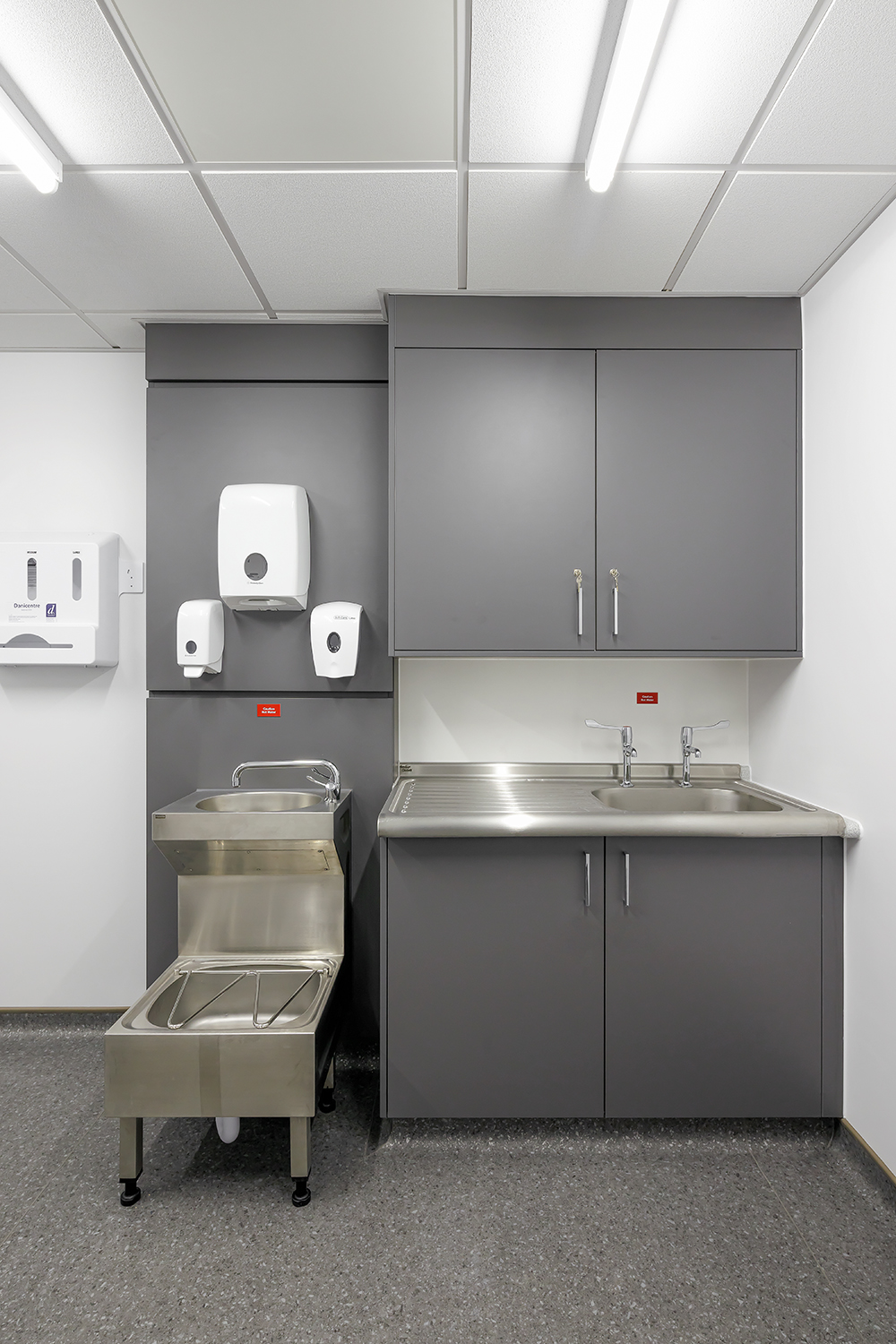The easier a hospital is to clean, the better it will be cleaned.
Never before has there been such a glaring spotlight on infection spread than since the recent Covid 19 pandemic. It sent the world and particularly the NHS into overdrive on reducing contaminating working practices and risk throughout the health estates.
Often overlooked by many construction sector leaders is the role that fitted furniture and bespoke joinery can have to help in this fight against infection. Dirt traps such as exposed edges on furniture and voids around cabinetry can increase risk significantly, so here are five ways to reduce infection risk in healthcare environments.
Reduce joints and seams in furniture
Traditional laminate worktops create joints and unnecessary seams on worksurfaces due to their assembly and although silicone or sealants are used often used to seal the joints, they still may present a dirt trap, on a cleanable surface. Look for opportunities to reduce jointing in cabinetry especially worksurfaces. Solid acrylic surfaces offer an opportunity for seamless cleanable designs with coved upstands, no joints, and no seams, helping you fight infection. Chips or damage can be easily sanded down, polished, and again provide a cleanable design.
Identify robust materials suitable for the environment
Robustness of materials and material choice for furniture is critical to fighting this battle against infection. Products liable to dent, crack or break with the ongoing use of the space should be avoided. Look for extra detailing such as ABS edging on cabinetry which prevent dirt harbouring damage. Consider impact and damage to materials. For example, laminate worksurfaces will often expose the substrate when damaged, creating a perfect bacteria reservoir for infection. Whereas, acrylic surfaces robust and even contain anti-bacterial properties.
Design out inaccessible spaces
Voids and uncleanable spaces create a perfect opportunity for dirt harbouring dust to collect and host bacteria. Healthcare fitted furniture, for example, wall cabinets should have a solid base that extends to the wall on the base to enclose the void at the back of cabinetry thus sealing the void and reducing risk. Although minor, these simple design details support clinicians and staff to mitigate unnecessary risk and enable effective cleaning.
Reduce impacts of spillage and liquid transfer
Alongside the reduction of voids and uncleanable designs, furniture should be sealed to prevent bacteria growth should spillage of liquids or fluids occur. Worksurfaces should include coved upstands and then be sealed to the wall, especially around sink units or environments of increased risk of moisture. Sink units should also be sealed to surrounding worktops to reduce risk of moisture between units, a great bacteria reservoir. Likewise, ensure plinths are sealed to the floor stopping liquid transfer to below the base of cabinetry. Not only does this stop spills but also assists with cleaning floor surfaces and the moisture risk associated.
Flowing designs reduce clutter
Functional use of spaces and adequate storage is also key to reducing infection risk, look for opportunities to store equipment and files within cabinetry. Abandoned boxes, clutter and unorganised equipment provides an ideal breeding ground for bacteria particularly if in dark and damp spaces. Design of healthcare spaces should include integrations such as slopping tops or infill panels on wall units to reduce unwanted clutter and thus bacteria growth. Spaces should also be designed to consider the storage requirements of the space alongside it’s functional use.
Infection prevention is a culture and fitted furniture and bespoke joinery can support your team during the design, delivery, and use of healthcare spaces to fight infection and bacteria risks. This often involves minor yet overlooked detailing, which truly impacts infection control within the healthcare estate. Fighting infection can be made easier with Hygenius. Safer Places, Safer People.


